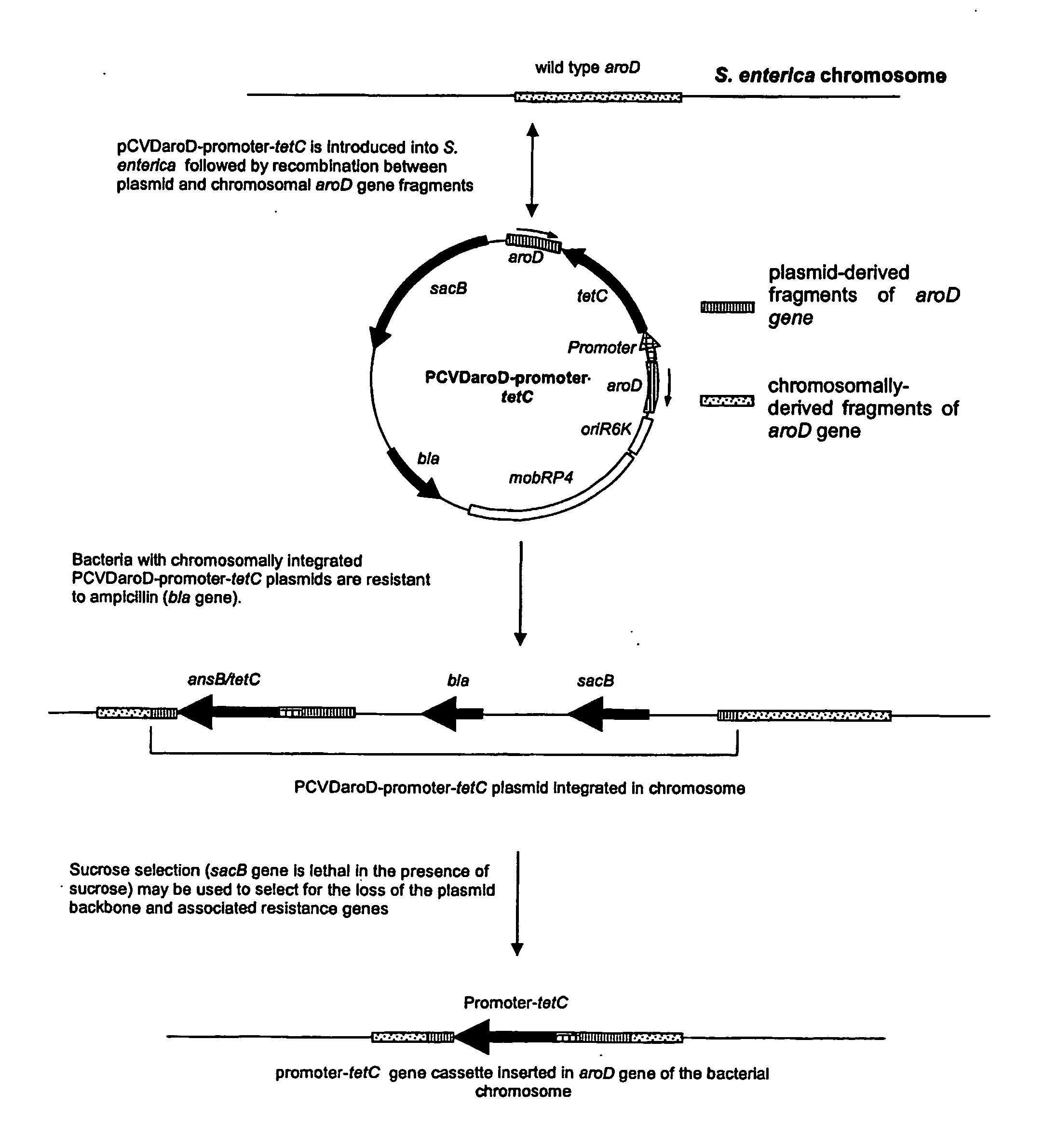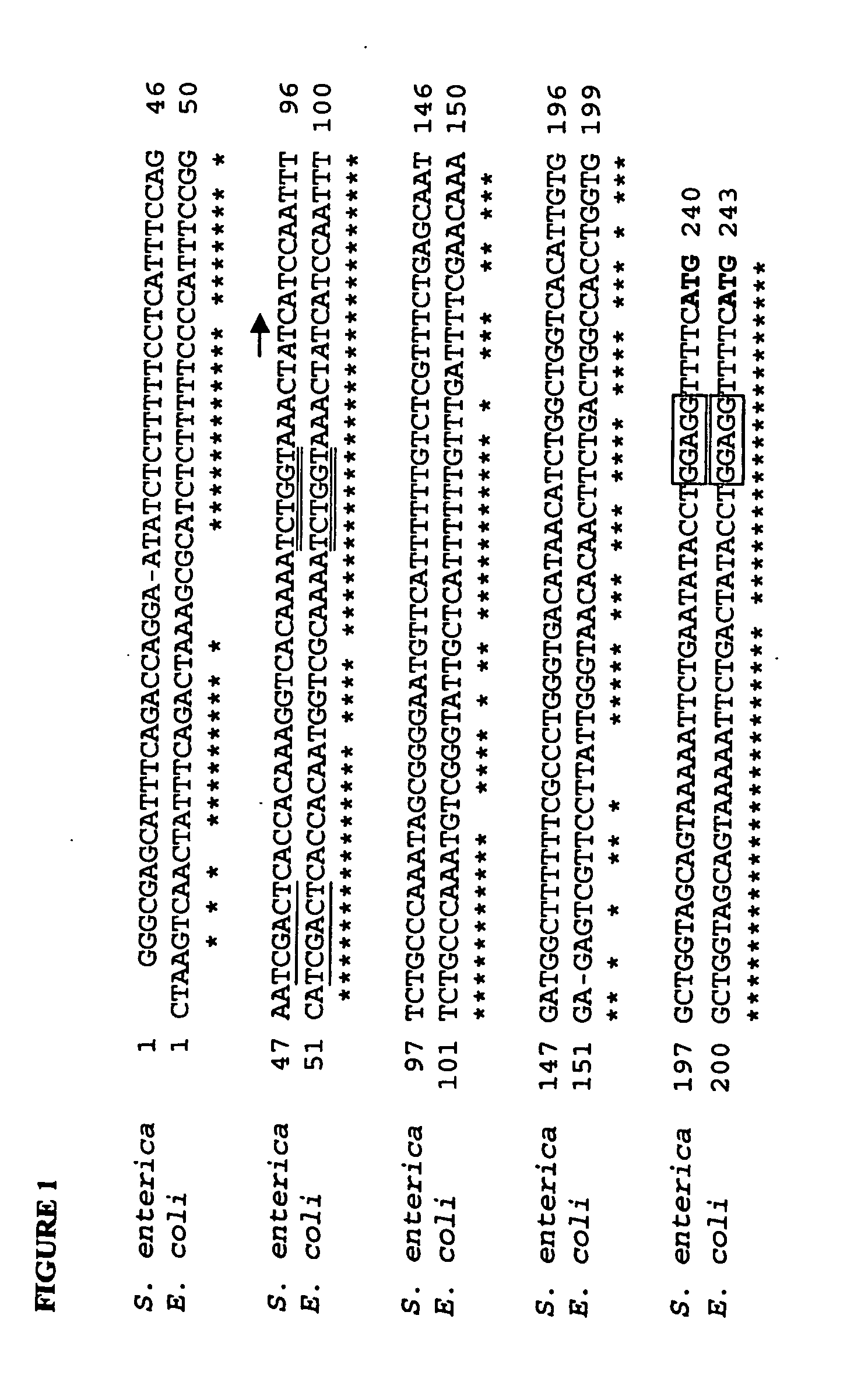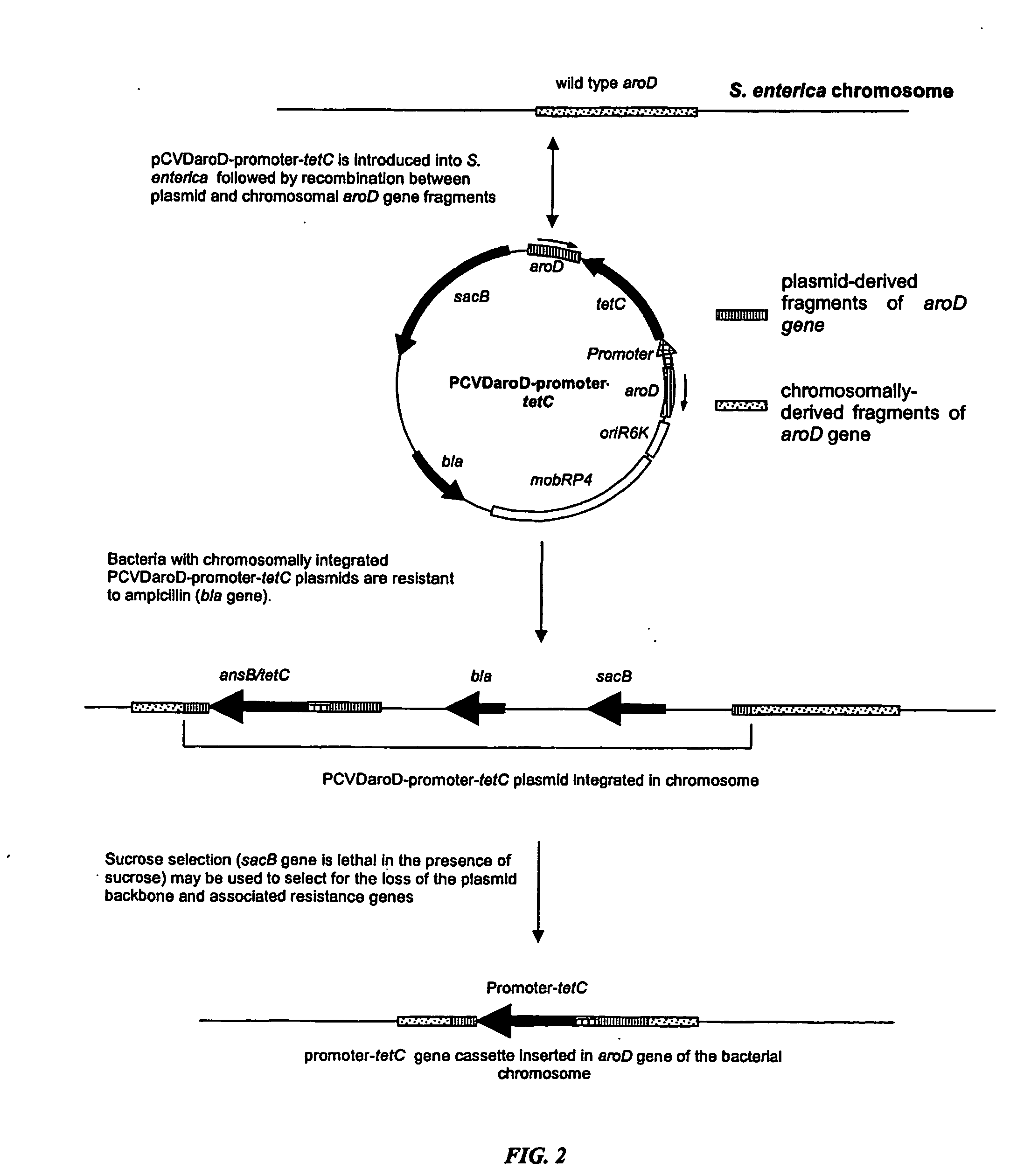Inducible Bacterial Expression System Utilising Sspa Promoter from Salmonella
- Summary
- Abstract
- Description
- Claims
- Application Information
AI Technical Summary
Benefits of technology
Problems solved by technology
Method used
Image
Examples
example 1
Construction of the Plasmid pKKsspAtetC
[0165] The sspA gene has been identified and characterised in E. coli. The equivalent gene in Salmonella has not been formally characterised, however BLAST searches (Altschul et al. 1997, Nucleic Acids Res. 25:3389-3402) were used to identify a homologue to the E. coli sspA gene in the Salmonella enterica serovar typhimurium LT2 genome (GenBank Accession number AE008854) (Mclelland et. al., 2001, Nature 413 852-856). The E. coli and S. enterica promoter sequences were aligned (FIG. 1). Oligonucleotide primers (Table 1) were designed to amplify the promoters from the E. coli (primers ST35, ST36) and S. enterica (ST37, ST36) genomes. Promoters were amplified directly from bacterial colonies using Platinum® Pfx DNA polymerase (Invitrogen) on an Omn-E Thermal Cycler (Hybaid) with the following program: 94° C. for 2 min then 30 cycles of 94° C. for 15 s, 55° C. for 30 s, 68° C. for 30 s. After amplification, DNA products were separated on a 2% agar...
example 2
Construction of Plasmid pCVDaroDsspAtetC
[0167] A fragment of the 5′ end of the aroD gene was amplified by PCR using primer ST06 which incorporates a XbaI site and primer ST07 which incorporates a SphI site using S. enterica strain 180galE as a template and using an Omn-E Thermal Cycler (Hybrid) with the following program:—95° C. for 2 min then 28 cycles of 95° C. for 30 s, 50° C. for 30 s, 72° C. for 40 s and a final extension step of 72° C. for 2 min. PCR products were analysed on a 1% agarose gel and the 521 bp fragment of the aroD gene was extracted using a Qiaquick gel extraction kit (Qiagen). The PCR product was digested with XbaI and SphI and the enzymes were removed using a Wizard™ DNA Cleanup kit (Promega). The suicide vector pCVD442 (Donnenberg & Kaper, 1991, Infect. Immun. 59 4310-4317, which is incorporated herein by reference) was similarly digested with SphI and XbaI, treated with shrimp alkaline phosphatase (USB) and applied to a 0.8% agarose gel. The linearised vecto...
example 3
Development of Rifampicin Resistant Salmonella enterica Strain STM1
[0170] A colony of S. enterica strain STM1 was inoculated into 20 ml of LB broth and grown at 37° C. with agitation for 9 hr. Serial dilutions from the culture were plated on LB agar+rifampicin (50 μg / ml) and grown overnight at 37° C. Rifampicin-resistant colonies were subcultured onto LB-rifampicin plates and after a second overnight growth the pure cultures of STM1 / Rif were stored at −70° C. with 20% glycerol. Lipopolysaccharide (LPS) profiles of the strains were checked using standard techniques to confirm that smooth LPS were still expressed by STM1 / Rif (Apicella et al., 1994, Meth. Enzymol. 235 242-252).
PUM
| Property | Measurement | Unit |
|---|---|---|
| Fraction | aaaaa | aaaaa |
| Immunogenicity | aaaaa | aaaaa |
| Strain point | aaaaa | aaaaa |
Abstract
Description
Claims
Application Information
 Login to view more
Login to view more - R&D Engineer
- R&D Manager
- IP Professional
- Industry Leading Data Capabilities
- Powerful AI technology
- Patent DNA Extraction
Browse by: Latest US Patents, China's latest patents, Technical Efficacy Thesaurus, Application Domain, Technology Topic.
© 2024 PatSnap. All rights reserved.Legal|Privacy policy|Modern Slavery Act Transparency Statement|Sitemap



